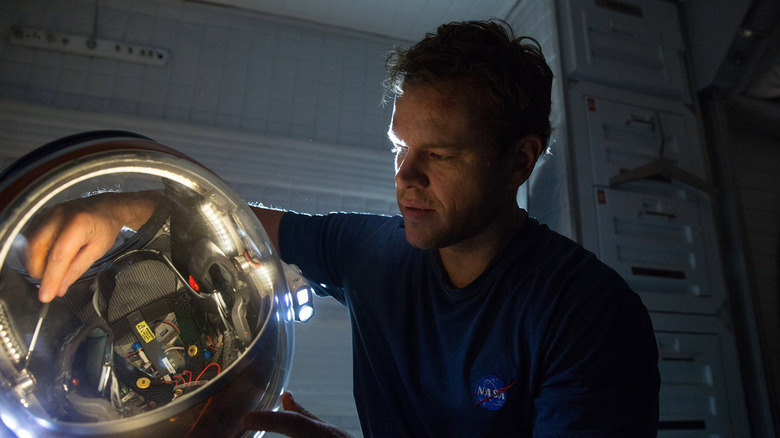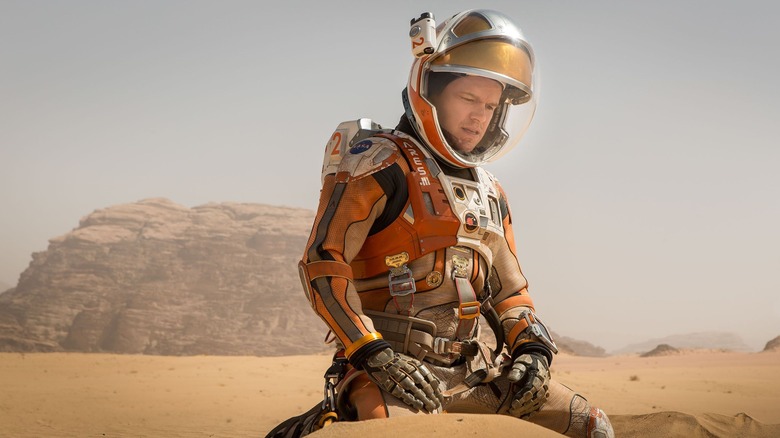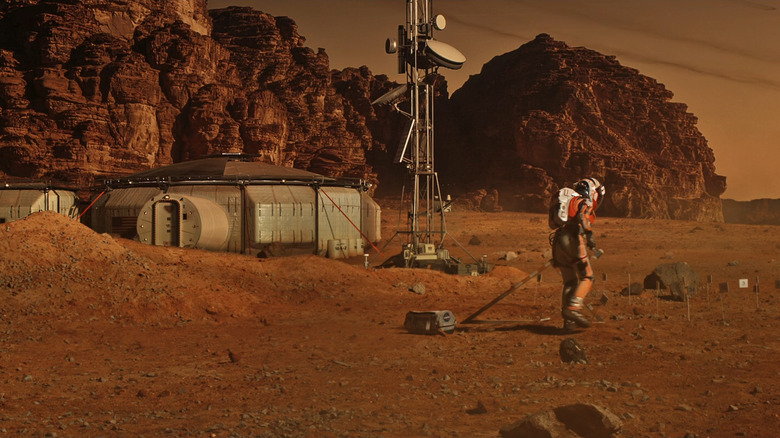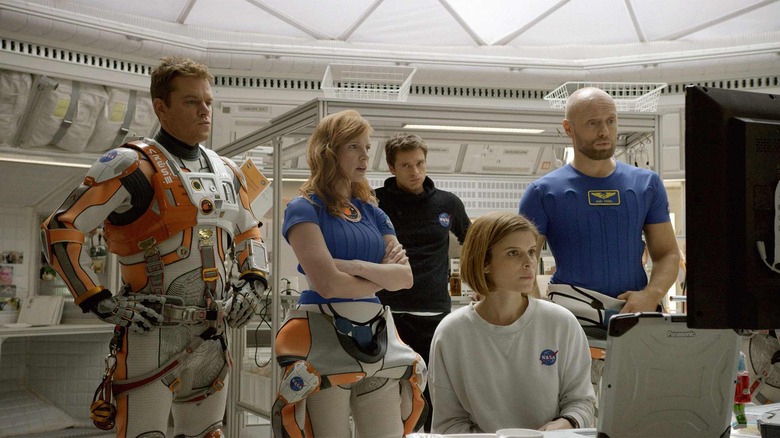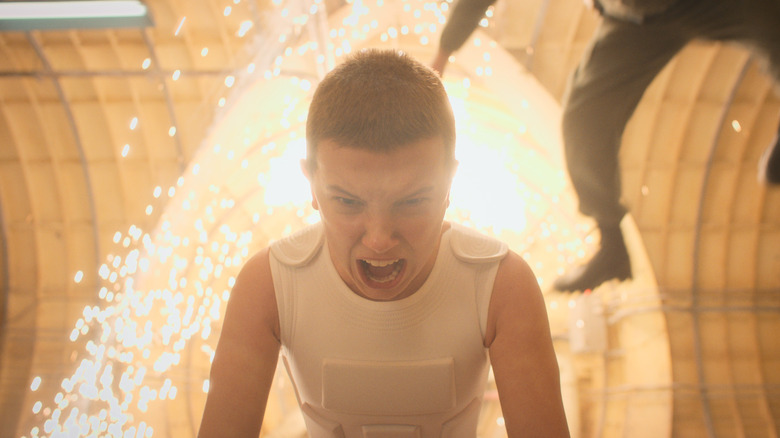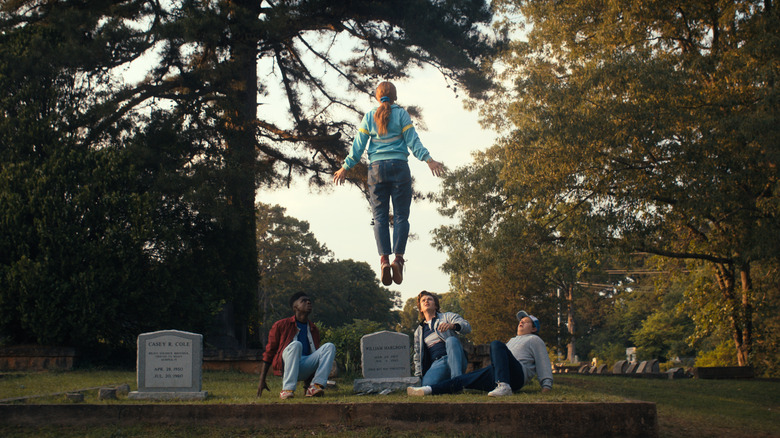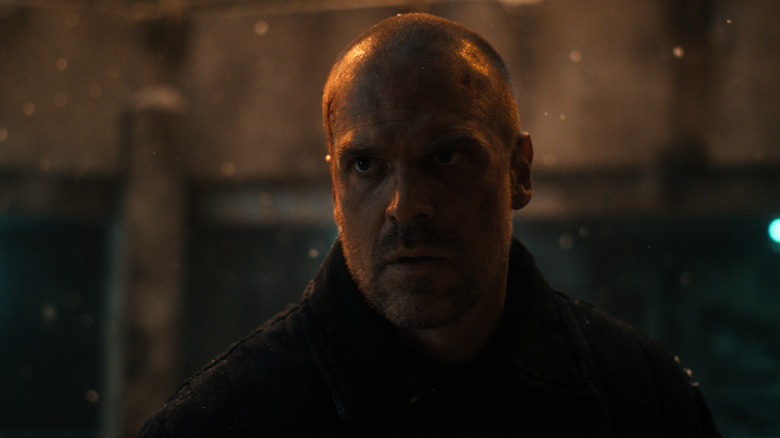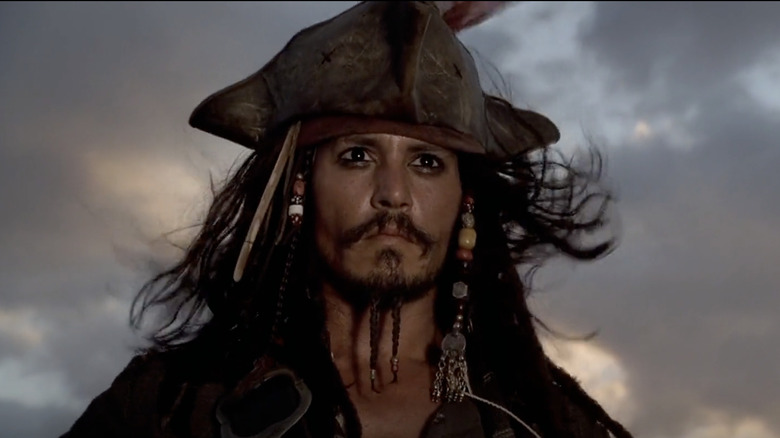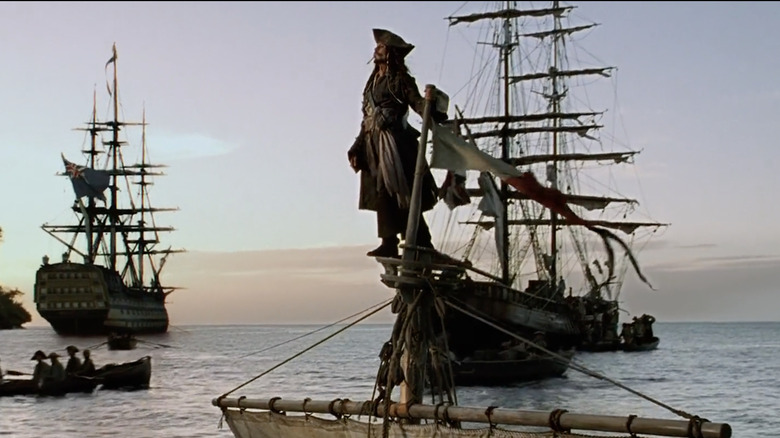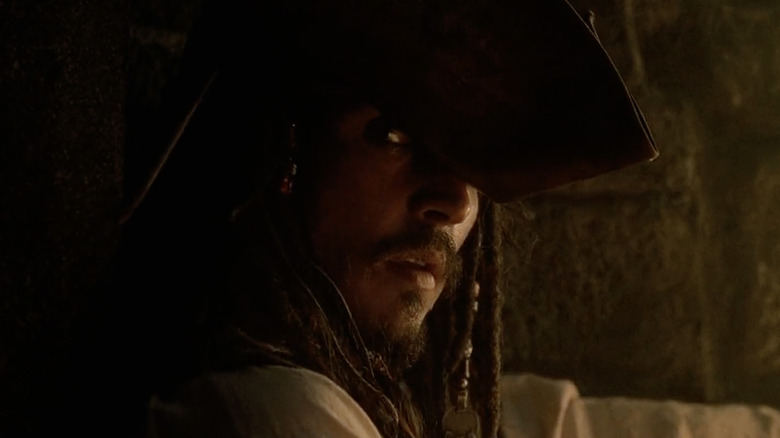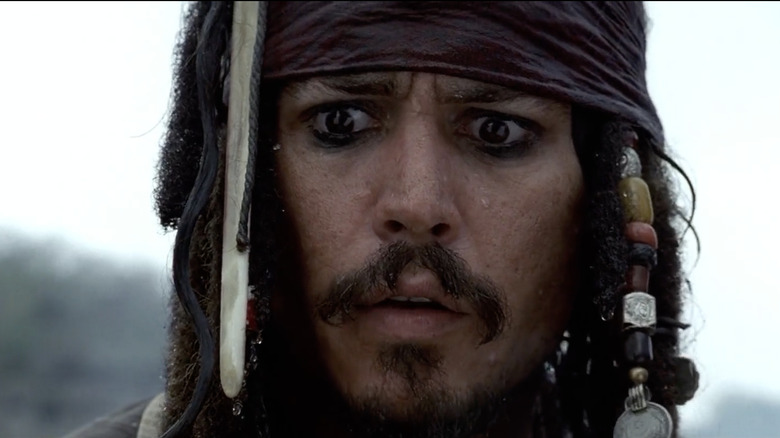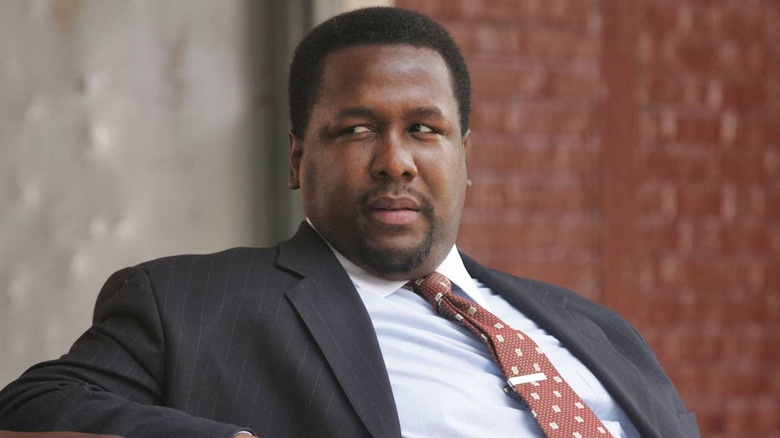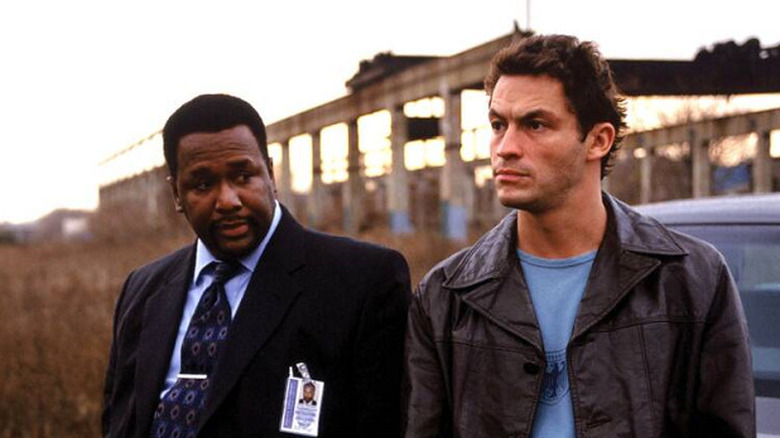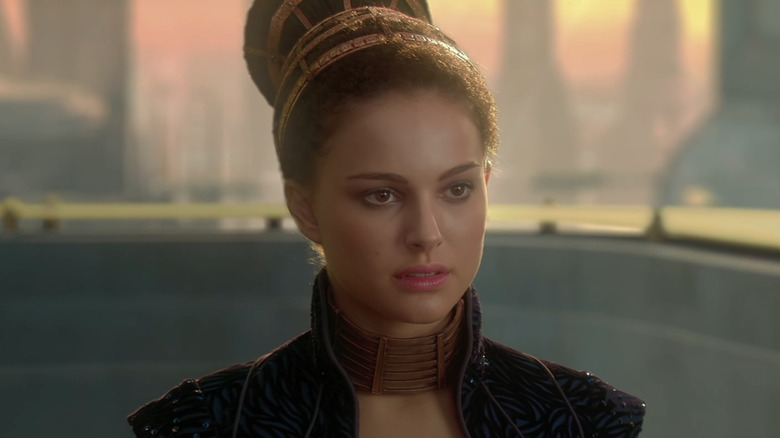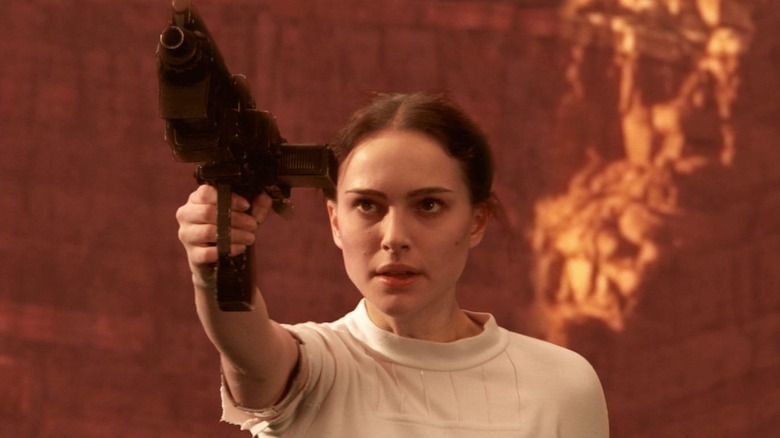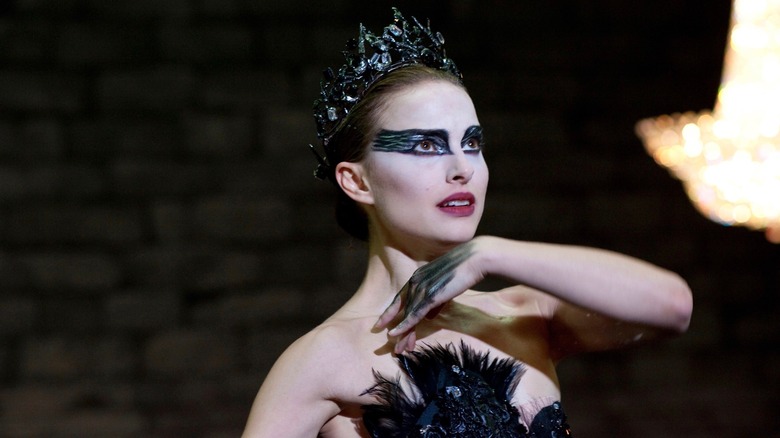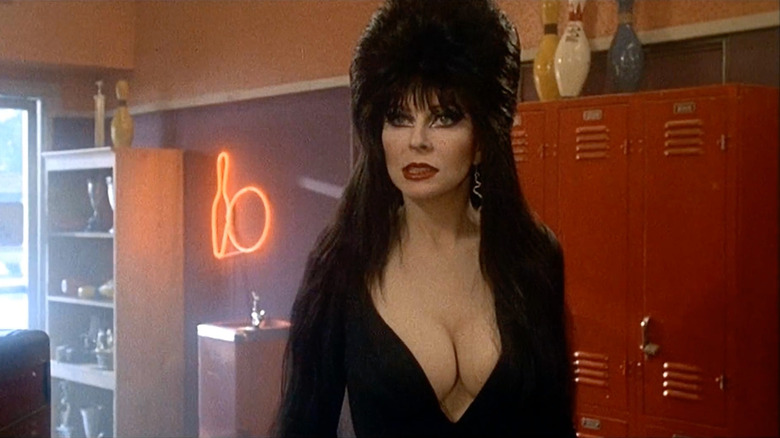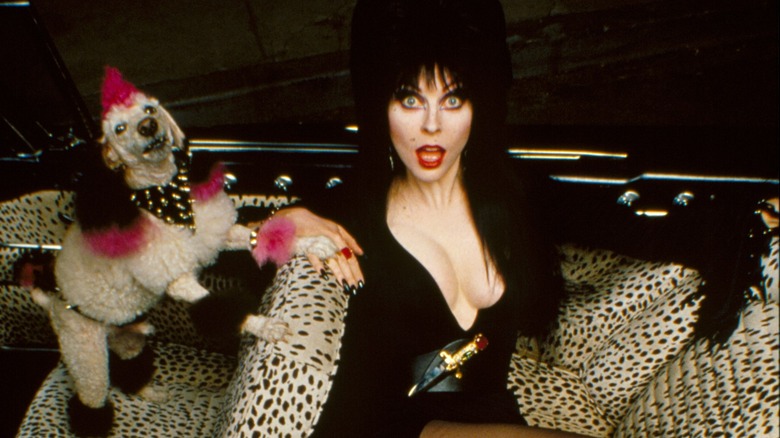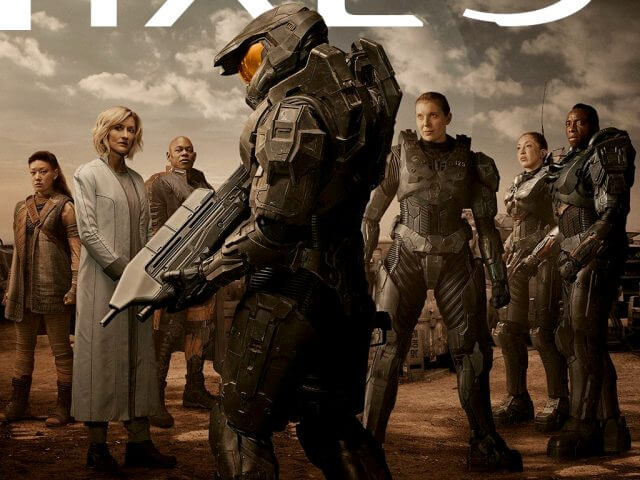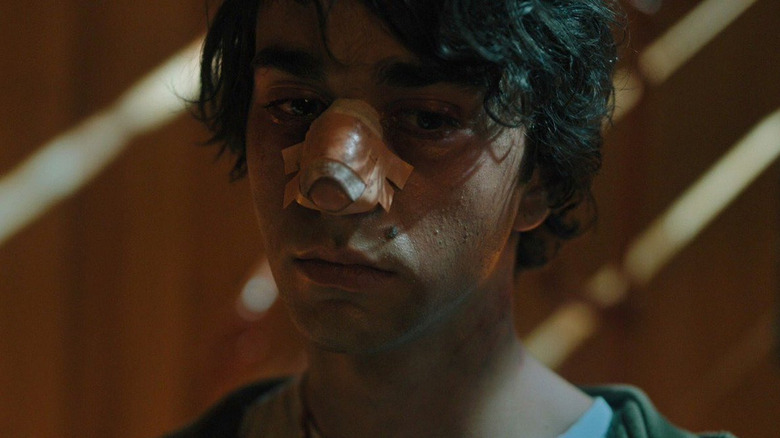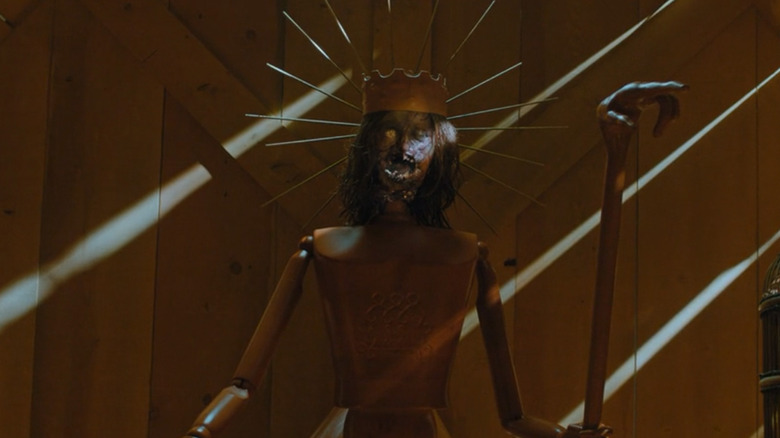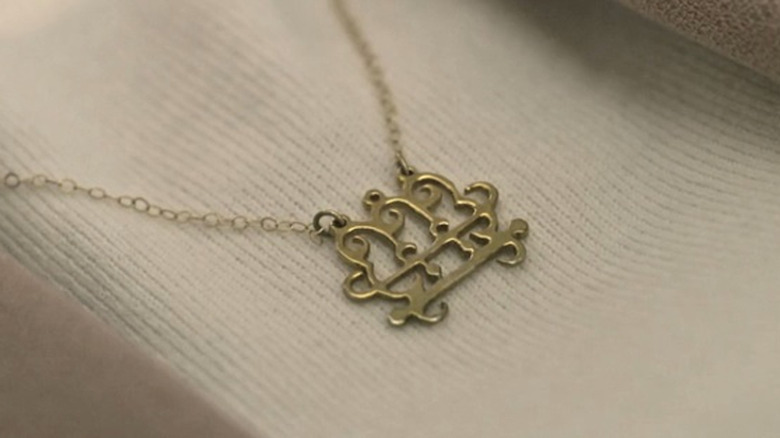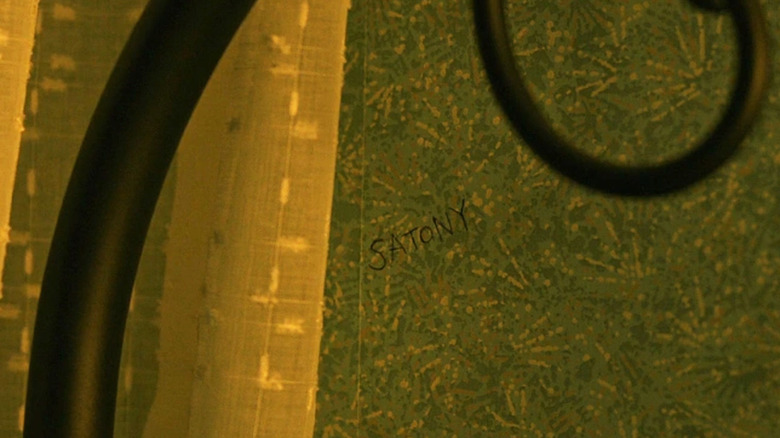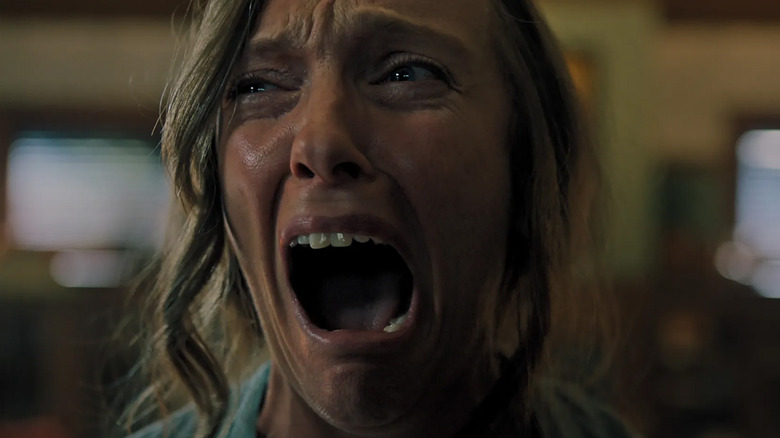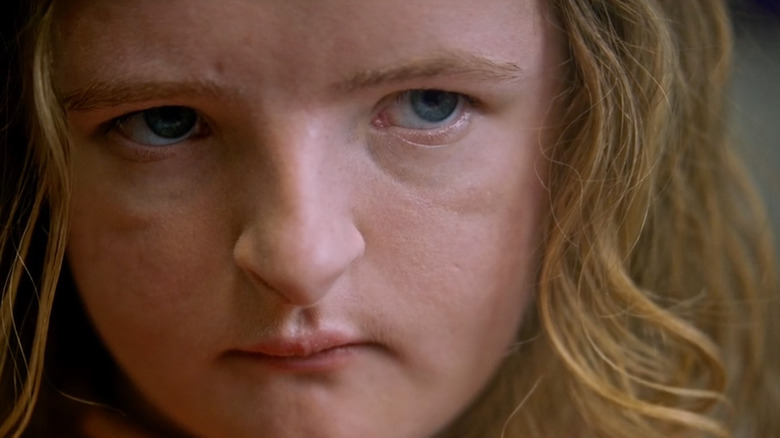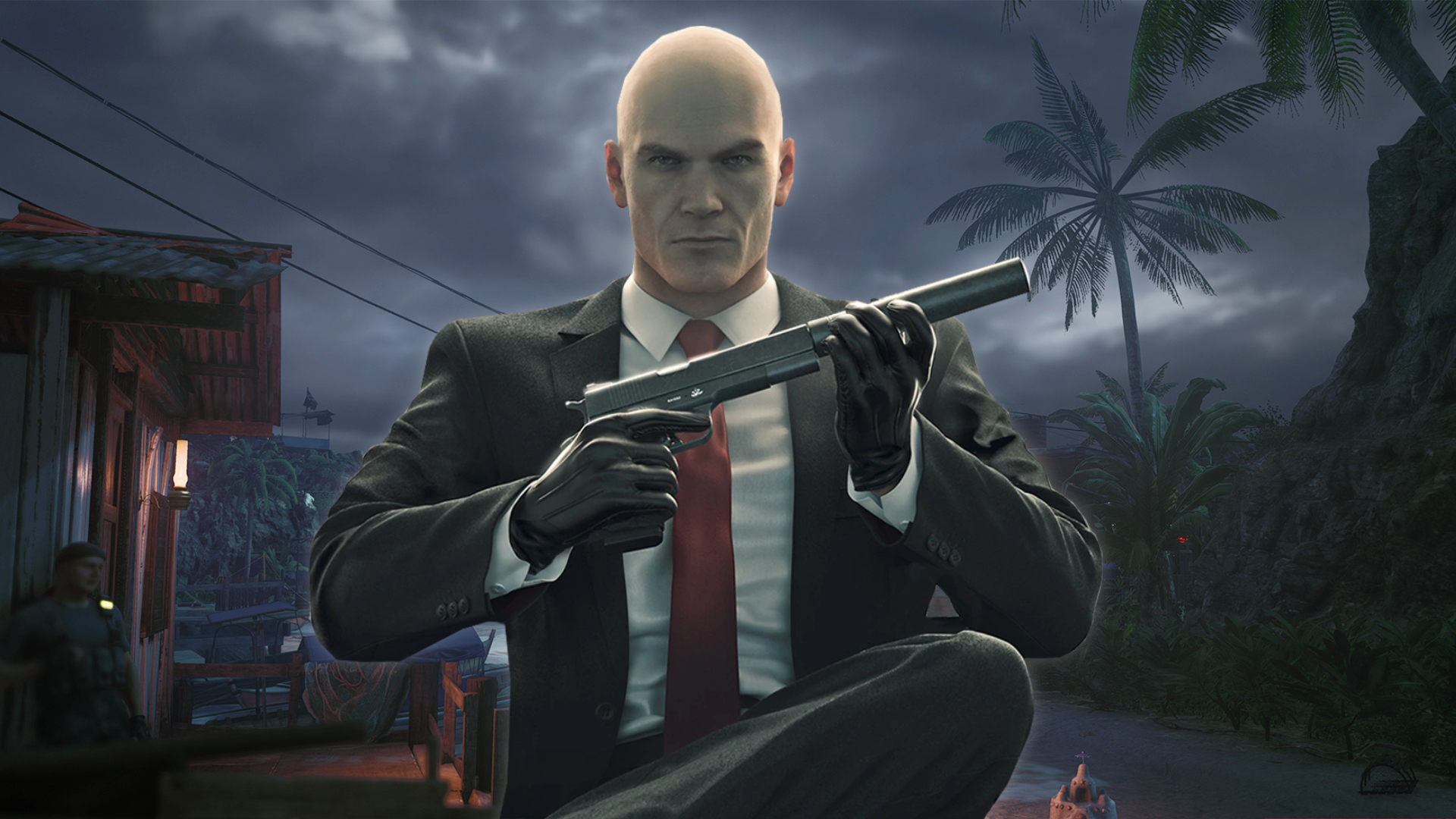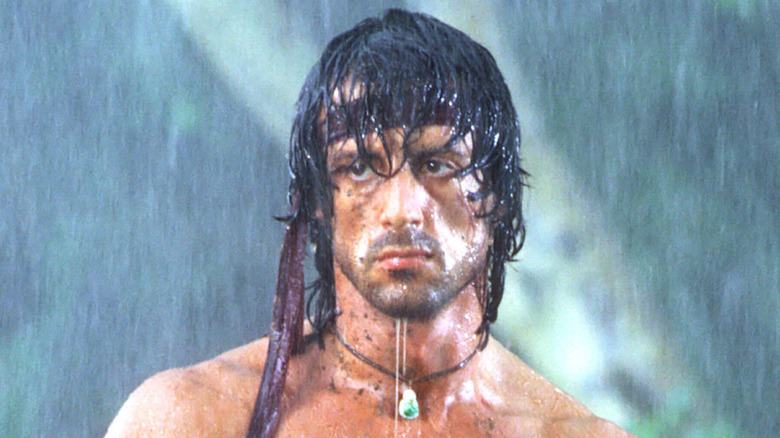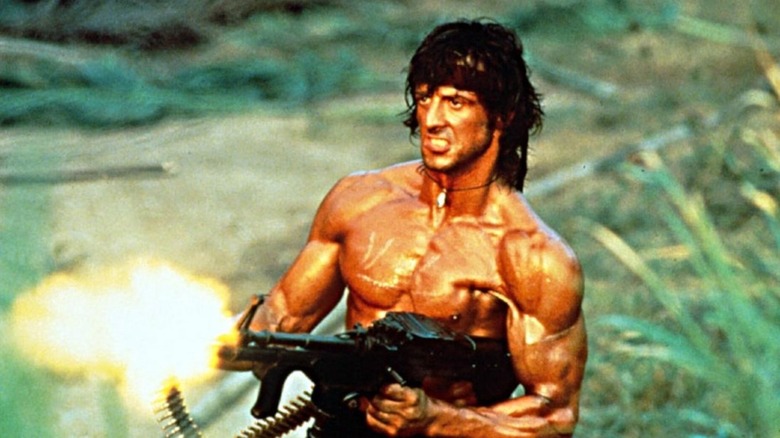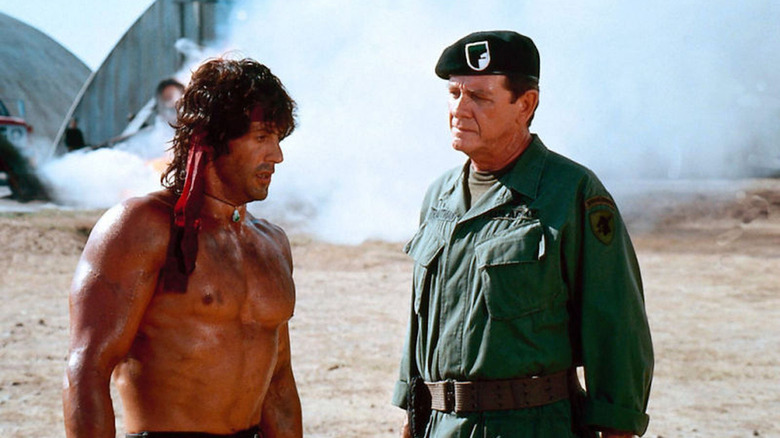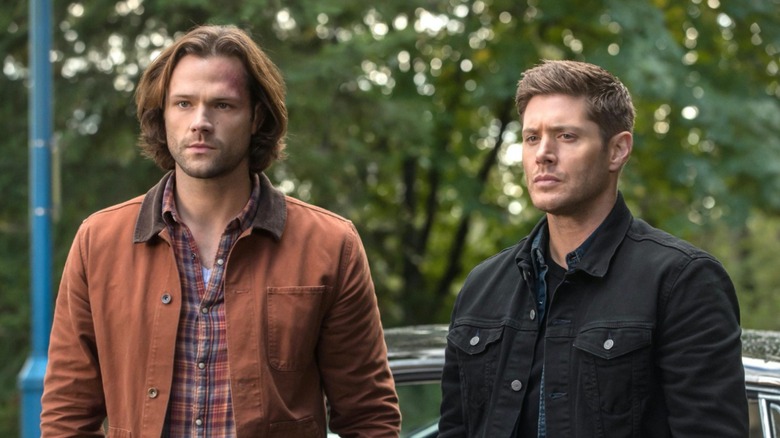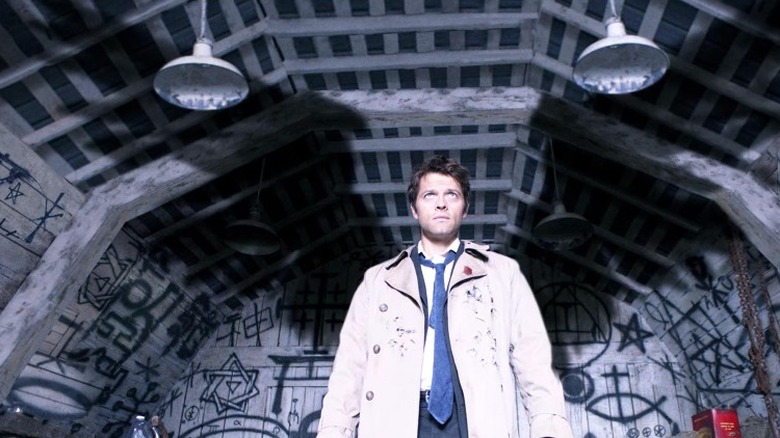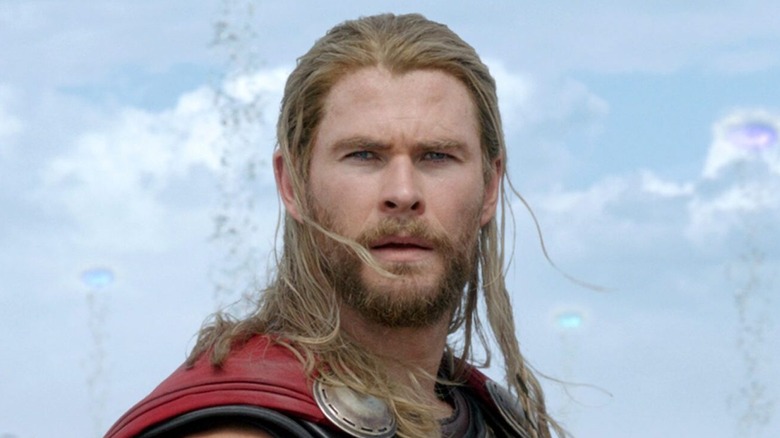
Chris Hemsworth has a workout app called "Centr." People love it. It encourages its subscribers to follow the holistic approach to nutrition, fitness, and mind-body practice that Chris Hemsworth does. It makes being Chris Hemsworth aspirational and cements the actor as a muscular goal post for better living. This isn't an offshoot of the Hemsworth experience, but rather a core facet of his public-facing persona. Hemsworth is so singularly handsome, chiseled, and appealing that he was cast as Marvel Comics' God of Thunder in 2009 before anyone truly knew his name. That initial impression has both made and haunted his career.
Hemsworth's time in Hollywood is a diptych: On the one hand, you have his Marvel Studios efforts and that company's journey to omnipresent monolith; on the other, there's a series of films by iconoclastic directors that aim to stretch contemporary cinema's limits. The former has been successful, the latter often misunderstood, much like Hemsworth himself. The Australian actor has distinguished himself as a performer who relishes testing his physical and emotional boundaries, surprising himself and audiences along the way. He is forever capable of growth and always improving. He is an artistic force of nature ... no wonder he's got an app. Here are the 14 best Chris Hemsworth movies, ranked.
In The Heart Of The Sea (2015)
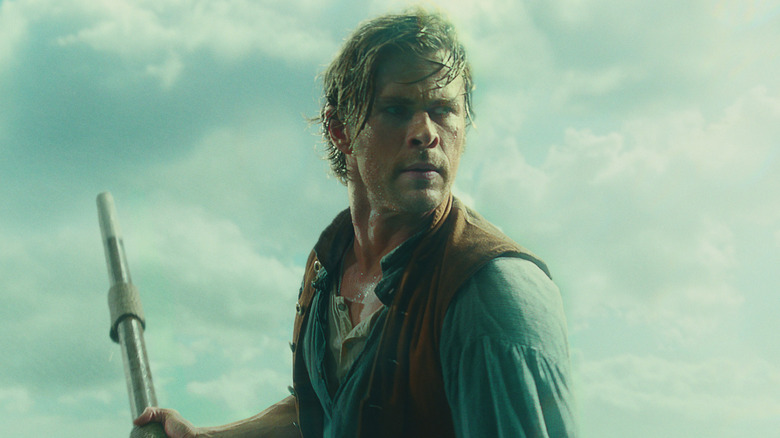
It's easy to forget "In The Heart of The Sea" is a Ron Howard film. To be fair, it's hard to pinpoint what makes a Ron Howard movie singular. The "Happy Days" actor has carved out a resume as dense as it is diverse, one that includes trite romantic comedies ("The Dilemma"), underrated thrillers ("Ransom"), and stone-cold classics ("Apollo 13," "Willow"). He's also collaborated twice with Chris Hemsworth, and it pains me to report that "In The Heart of The Sea" is the lesser of their efforts.
"In The Heart of The Sea" adapts Nathanial Philbrick's 2000 book of the same name to plumb the depths of the real-life event that inspired Herman Melville's "Moby Dick." Accordingly, the movie is a minor marvel of old-school craft, visually splendid and rife with mounting dread. It's also terribly paced and riddled with cliches. There's little that Hemsworth, Cillian Murphy, Benjamin Walker, and a pre-Spider-Man Tom Holland can do with the thin material. This is a film that would play well in a bar on mute, its images impressive every time they were glimpsed at, its story best left at sea. It's easy to forget it's a movie at all.
12 Strong (2018)
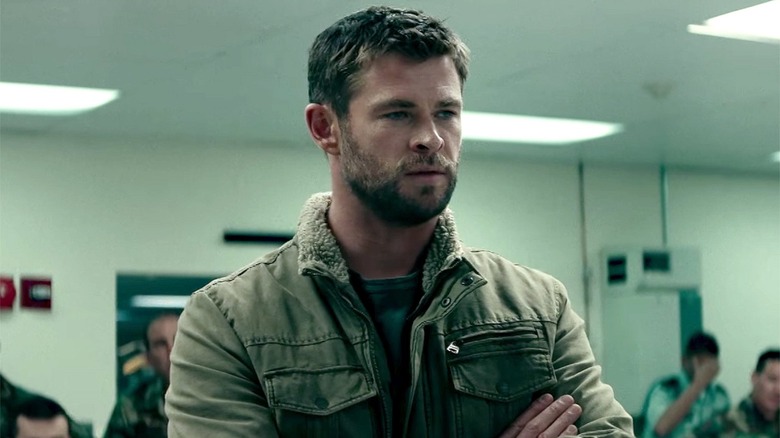
Chris Hemsworth, Michael Shannon, Michael Pena, and horse soldiers aren't the ingredients for a great movie. They should be, and that's the downfall of "12 Strong." On paper, director Nicolai Fuglsig's tale of a Special Forces team that rode steeds and took out the Taliban plays like dad-movie gangbusters. In practice, it's cliche-riddled. The script is overly jingoistic, and it's every line of dialogue is either over or undercooked. Those expecting greatness will be disappointed.
That said, enter "12 Strong" with zero expectations and its pleasures are bountiful. The battle scenes are brisk and muscular, equally rooted in war film and Neo-Western flourishes. Hemsworth is good and sturdy as the Special Forces commander, but Shannon, Pena, and — the somehow still underrated — Trevante Rhodes ("Moonlight," "The Predator") are better. At the end of the day, "12 Strong" is solid, and given that Chris Hemsworth's filmography is a study in cinematic ups and downs, a simple but solid entry deserves some commendation.
Thor (2011)
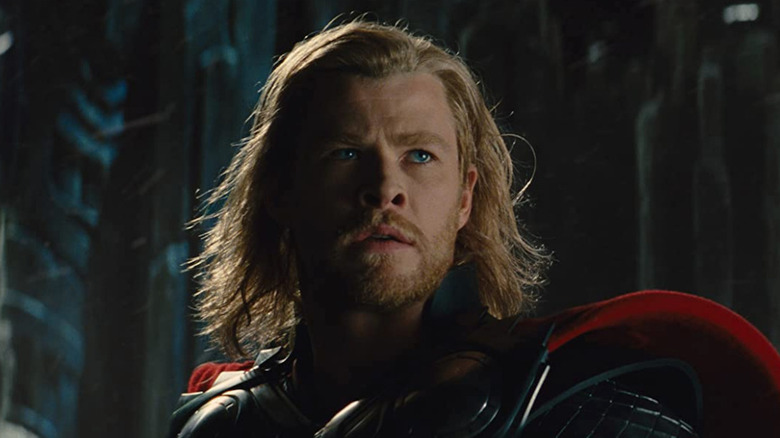
"Thor" isn't the best Marvel movie, but it is the most important one. Consider: Tony Stark (Robert Downey Jr.), upon seeing Thor (Chris Hemsworth) for the first time, quips "Shakespeare in The Park? Doth mother know you weareth her drapes?" That only makes sense because of "Thor" as directed by Kenneth Branagh, a guy who loves Shakespeare so much he's brought six of his plays to the big screen. Branagh turns "Thor" into Groundlings-worthy theater. Its spectacle is mediocre, but its family drama is appropriately grandiose and exquisite. The sibling rivalry between Thor and Loki is far more Edgar and Edmund from "King Lear" than "Game Of Thrones." Their dynamic, one informed by admiration and jealousy alike, becomes a bedrock of the MCU's Infinity Saga, as do the themes of paternal legacy which play out between Odin and his sons. "Iron Man" makes the MCU fun, but " Thor" gives it weight.
It also gives the MCU Chris Hemsworth. A decade-plus on from "Thor," it's hard to overstate what Hemsworth accomplishes as the God of Thunder. He doesn't just give a star turn, he sets the template for 11-plus years of MCU star turns. Hemsworth was a global unknown when he got cast as Thor and the speed with which it made him a household name formed the blueprint for going A-list. Hemsworth would be better as Thor down the road, but he would never be more indelible.
Avengers: Infinity War (2018)
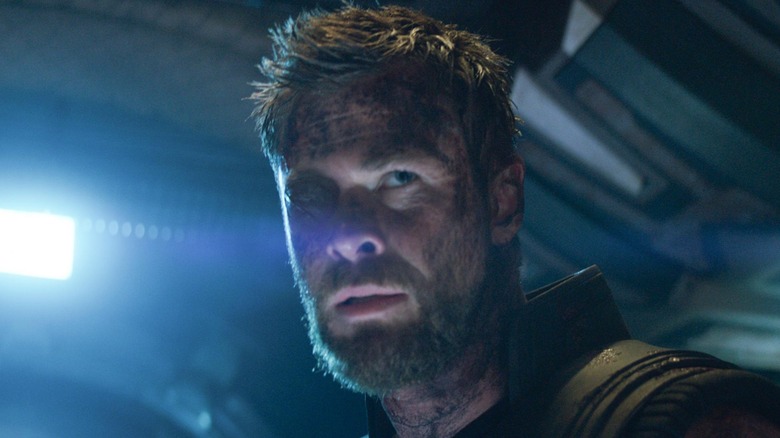
"Avengers: Infinity War" is improved by "Avengers: Endgame." It's almost impossible to separate the two. The epic swan song of Marvel's Infinity Saga is so packed with spectacle, payoffs, and bombastic popcorn cinema that it makes you believe Kevin Fiege planned every second of it. As a Chris Hemsworth showcase, "Infinity War" has few equals. From the opening moment when Thanos (Josh Brolin) chokes Loki (Tom Hiddleston) out before Thor's very eyes, the Russo Brothers' film asks Hemsworth to be an audience surrogate and bear the weight of devastating stakes. He does so and then some. Thor's arrival on the battlefield of Wakanda is an all-time Marvel moment, as is his attempted destruction of the stone-craving warlord from Titan.
That said, as a standalone effort "Infinity War" is subpar. It moves all its pieces onto the "Endgame" board with aplomb but rarely tells a compelling story. What works about the movie is everything that led up to it. The death of Gamora isn't ostensibly well-shot, but her loss is devastating because the "Guardians" films are classics. Even the most lasting moment of "Infinity War" — Thanos's snap blipping half the world's population and heroes into dust before the audience's eyes — hinges on audience familiarity. "Endgame" somehow doesn't fall into this trap so often. It's painful to admit that it and "Infinity War" aren't in balance (as all things should be), but there's no world in which they are, in this or any multiverse.
A Perfect Getaway (2009)
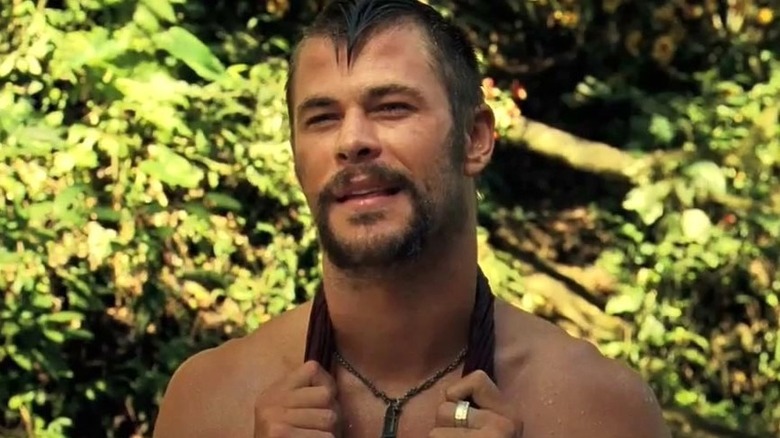
"A Perfect Getaway" is written and directed by David Twohy, the author of 1993's "The Fugitive" and Vin Diesel's "Riddick" trilogy. Those films are varying degrees of stone-faced, but they're not meta in the slightest. "A Perfect Getaway" is. The characters of "A Perfect Getaway" — from a self-proclaimed American Jedi played by Timothy Olyphant to Steve Zahn's upstart screenwriter — talk about what makes a good film tick, from red herrings to second act plot twists. They also discuss Nicolas Cage a lot.
If this sounds confusing, it's far smoother in execution than on paper. "A Perfect Getaway" takes three couples vacationing in Hawaii (Zahn and Milla Jovovich, Olyphant and Kiele Sanchez, Marly Shelton and Chris Hemsworth) and sticks them in the thick of a classic potboiler. A pair of newlyweds have been killed on the island. Every couple suspects every other couple and each has dark, ludicrous secrets. The film becomes increasingly convoluted but is charming front-to-back. This is largely thanks to Olyphant and Jovovich, who both tap into their characters' specific ids and spill them onto the screen through bold, Nick Cage-worthy choices. Hemsworth, for his part, workshops the icy cool aggression he would deploy with scientific precision later in his career. "A Perfect Getaway" isn't perfect, but it's a diverting trip worth booking at least once.
Extraction (2020)
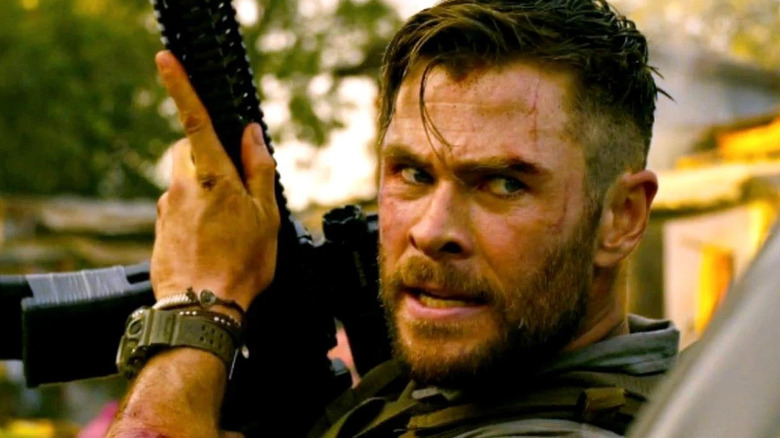
There's a fight scene during the back half of "Extraction" where gun-for-hire Tyler Rake (Chris Hemsworth) fights a gang of mercenary street kids. The kids don't pull their punches, and neither does "Extraction." These youths get stabbed, slammed through car doors, and crushed by motorcycles. It's an awesome and deeply upsetting sequence. It's also a litmus test for your enjoyment of Sam Hargrave's gritty action film, which premiered to instant adulation on Netflix in 2020. In many ways, "Extraction" is the most successful Chris Hemsworth movie not produced by Marvel and the strongest expansion of his brand that isn't a workout app.
Tyler Rake is cold-blooded and nihilistic to a fault. Rake doesn't kill his aggressors so much as man-handle them cruelly: one nameless bad guy is disposed of via, yes, a rake right through the eyes. "Extraction" is a lot! Hargrave gets on his wavelength, directing-wise, as the film was instantly notable for its one-take action sequences and cruel violence. It isn't much more than that. The script by Hemsworth's "Avengers: Infinity War" and "Endgame" directors The Russo Brothers is paper-thin at best. Any scene not involving combat of any sort falls flat, but combat is the movie's big-ticket item and "Extraction" makes no bones about it. Sometimes a filet mignon is too delicate ... sometimes you need a porterhouse. "Extraction" is rare-meat cinema, blood dripping from the bone. Take it or leave it.
Ghostbusters (2016)
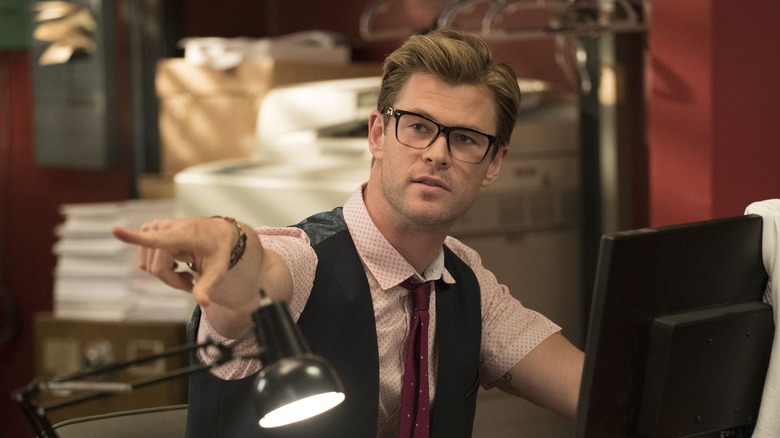
The internet loves to talk about "Ghostbusters." It discusses how the film's box office failure propped up a legion of toxic, close-minded fanboys. Those fanboys claim "Ghostbusters" is an affront to art-making decency. Paul Feig's funny movie gets lost in this chatter and it shouldn't. While 2016's "Ghostbusters" isn't 1984's "Ghostbusters," no film could be. Instead, it's a very funny movie starring four very funny women (Melissa McCarthy, Kate McKinnon, Kristin Wigg, and Leslie Jones) who cut their path through the archetypal territory. The set-pieces are good, the characters are better. For a film that's been so hotly debated, "Ghostbusters" feels like a hard movie to argue over or with. It's that charming.
Feig's film is immensely appealing in no small part thanks to Chris Hemsworth, who exudes maximum himbo energy as Kevin, the Ghostbusters' receptionist. Whether he's naming his dog "My cat" (Mike Hat) or auditioning his shirtless, saxophone-playing headshots for the crew, Kevin is as dull a bulb as he is adorable. He also becomes the film's bad guy for a stretch due to possession, allowing Hemsworth to flex both his acting and actual muscles. For a guy who's been touted as a movie star, Hemsworth is wonderfully relaxed and at home in a supporting role. He, unlike a large swathe of social media, knows this Ghostbuster team is worth backing.
Blackhat (2015)
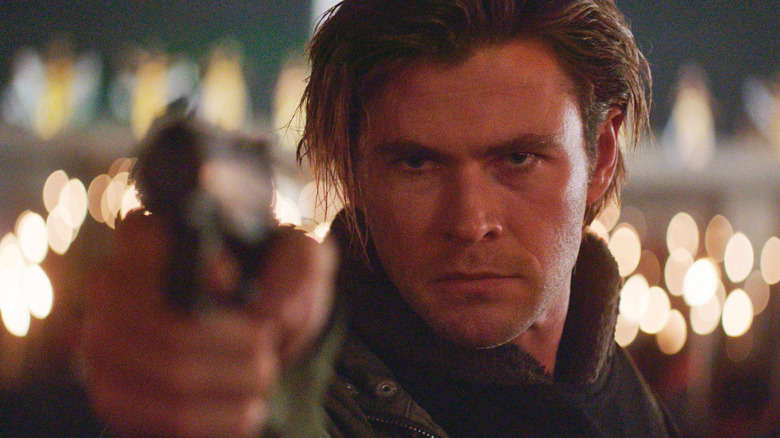
Chris Hemsworth is, for all intents and purposes, a massive movie star, but outside of Marvel his movies have rarely been hits. These truths live in concert with one another, not giving a quarter. The Australian actor's success hasn't translated to the sort of films Marvel's success is making increasingly rare. That even applied to Michael Mann's "Blackhat," a film that should hold some appeal to audiences. Mann is a neo-noir master, his films and TV shows include pop culture staples ("Miami Vice," "Heat," "Ali") and films that blend blockbuster and art house ("Collateral"). Mann is exactly the sort of filmmaker Chris Hemsworth should work with, as his innate style is a bridge between the spheres the actor wishes to operate in. What's surprising about "Blackhat" is that it's a blockbuster built from inaccessible elements.
"Blackhat" takes a steely-eyed look at technological collapse and the meltdown of financial systems. There are no heroes to swoop in and save the day here. There's a disinterested hacker named Hathaway (Hemsworth) and two government institutions already reeling from rampant cybercrime. This is just part of what makes "Blackhat" brilliant and misunderstood: it's a blockbuster that deliberately tests the building blocks of popcorn movies only to knock them down like the terrorists it antagonizes. There's no world in which it believes things are turning out well for humanity. Chaos is inevitable. The systems don't work.
Bad Times At The El Royale (2018)
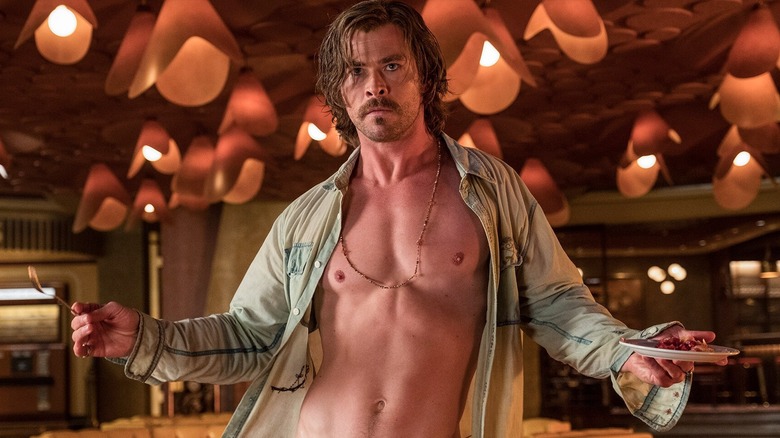
"Bad Times at the El Royale" failed as a "Cabin in the Woods" follow-up, but Drew Goddard's meta-horror blockbuster is nothing less than a game-changer. Asking the same filmmaker to comment on and transform another genre — let alone noir — is an impossible task. So if you haven't seen "Bad Times," some advice: forget who made it. If you don't know, never look it up. Focus, instead, on the star turn from Cynthia Ervio, who manages to give a naturalistic, tough-as-nails ingenue turn that's also worthy of a musical. Relish the intricate and occasionally shocking plotting. Most of all, enjoy Chris Hemsworth. Hemsworth's range has always been underrated, but he stretches every acting muscle as Billy Lee, the film's proverbial devil. Watching Hemsworth weaponizing his hotter-than-thou charms into a genuinely chilling cult leader is mesmerizing. He makes being charismatic and chiseled feel downright wrong. His performance is arguably the film's secret weapon.
Yet that's the "Bad Times at the El Royale" conundrum, in that it's a movie only built from secret weapons. Every one of its pleasures lingers more than lands, but they do linger. You need only look up the "Can't Hurry Love" sequence on YouTube to see it's been streamed more than 600,000 times for proof of this. Like the best noir, "Bad Times at The El Royale" lingers in the shadows of its audience's minds, of showier films, and of the movie which made its director famous. It's anything but a failure.
Thor: Ragnarok (2017)
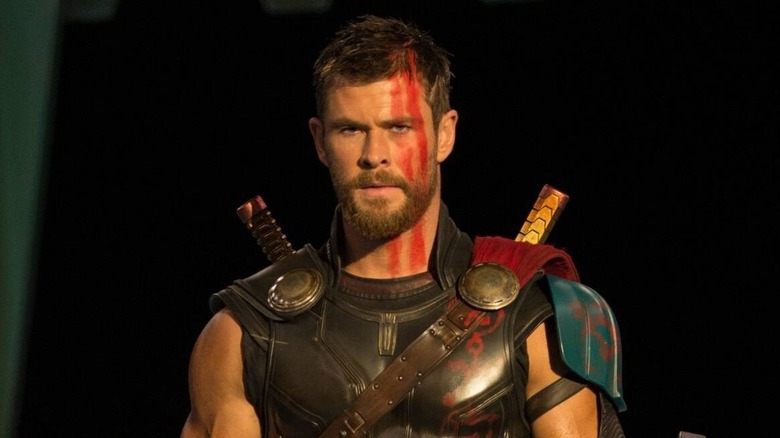
"Thor: Ragnarok" is admired and remembered for its gonzo sense of humor, but let's get something clear: it's also the most radical Marvel movie. Taika Waititi is a self-proclaimed Polynesian Jewish filmmaker of Te Whānau-ā-Apanui Māori descent who, through "Ragnorok," tells a story about one culture burying another and how the solution isn't reintegration but burning it all up and starting over. You can't save the land when there's blood in the soil. That's a fiery idea at the core of a film that, memorably, features a character screaming "Piss off, space ghost!" and improvised monologues about Loki becoming a snake when he was eight. It's also what makes "Ragnarok" special.
Waititi understands that comedy can be angry and joyous all at once. The line between yelling from joy and howling with rage is a thin one, and Waititi never tries to walk it. Instead, he hops from side to side, synching Hulk punching wolves to Led Zeppelin's "Immigrant Song" shortly after a stark act of mass slaughter. Thor loses an eye. Jeff Goldblum has an orgy spaceship. Every one of these elements belongs and is wonderful. If comic book films threaten to become more homogenous with every passing release, "Ragnarok" is a field guide to keeping them fresh. Sometimes you have to burn the rule book up and start again.
Avengers: Endgame (2019)
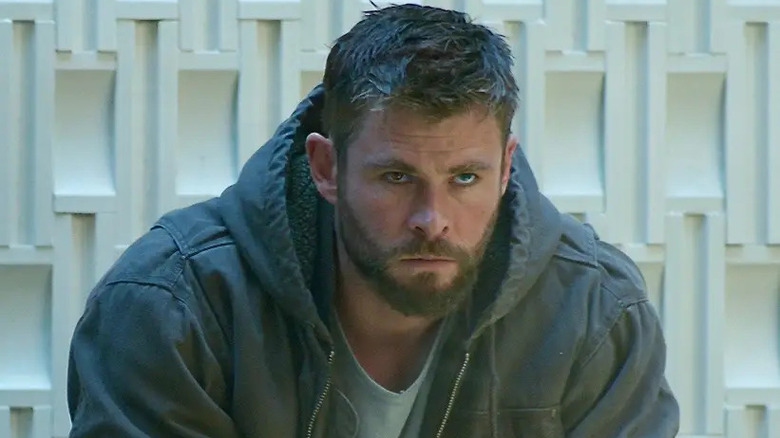
It's hard to critique "Avengers: Endgame," and even harder to think of it as a film. "Avengers: Endgame" is the end of Tchaikovsky's "1812 Overture" extended to a three-hour length. The Russo Brothers' final salvo of The Infinity Saga is all payoffs, so even its quiet is bombastic. If the movie isn't rewarding viewers who showed up for this *and* ABC's "Agent Carter," it's shaking the cynicism loose from IP-driven blockbusters. Many films try to recreate the childhood feeling of playing with toys in a sandbox, but "Avengers: Endgame" actually does it. It's a dizzying accomplishment and you're either onboard from the first frame or not.
It's also impossible to overstate how crucial Chris Hemsworth is to making "Endgame" work. There's been a lot of intelligent writing about the highs and problematic lows of Thor's arc here, but the latter isn't on Hemsworth in any way. He delivers a funny, focused, and quietly primal portrait of PTSD. If he didn't, those lows would be easier to ignore. His work (and every performance in "Avengers: Endgame," really) is a reminder that the MCU's not-so-secret weapon has been their performers. There's a reason it ends with their signatures. "Avengers: Endgame" is a cinematic curtain call. Here's hoping the encore's half as good.
Rush (2013)
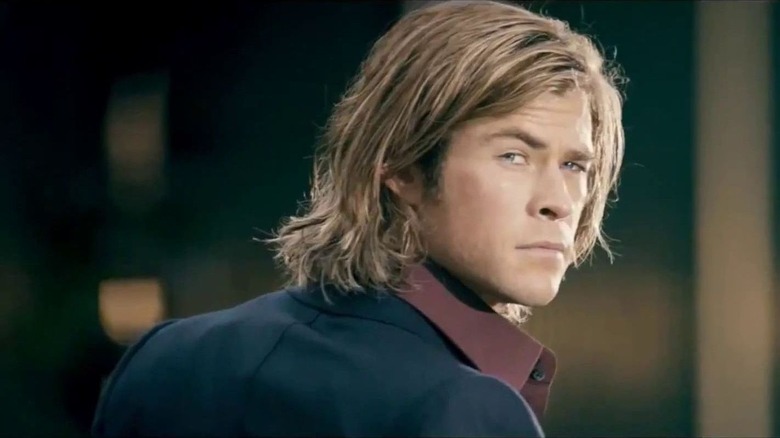
For a film set in the 1970s, "Rush" is remarkably ahead of its time. Ron Howard's whip-smart and exhilarating sports film about the rivalry which fueled Formula 1 Racing's glory days is made from winning parts. It stars Chris Hemsworth and Daniel Brühl as rival drivers, the latter on the verge of his own Marvel-spurred stardom. In 2013 Formula 1 was a forgotten brand, but is now a global phenomenon thanks to an upstart class of incredible drivers and Netflix's "Drive To Survive" docudrama. The script comes courtesy of Oscar-nominee Peter Morgan, who previously made the great "Frost/Nixon" with Howard, so everything about "Rush" is geared to cross the finish line in style.
What's remarkable is that "Rush" cuts to the heart of why racing is compelling and why we watch sports. During the film's midsection, Niki Lauda (Brühl) is on his honeymoon and staring at the ocean after a deeply relaxing day. His wife Marlene (Alexandra Maria Lara) asks him what's wrong. Niki's response is wonderful and chilling: "Happiness is the enemy. It weakens you. Suddenly you have something to lose." Most sports movies steamroll their way to a moment of triumph. "Rush," asks why triumphs are necessary in the first place, and why seeing a car cross the finish line is cathartic and not calming. Humans need to see other humans striving and be reminded of their discontent, their dreams, and their desires. "Rush" is a sterling reminder.
Star Trek (2009)
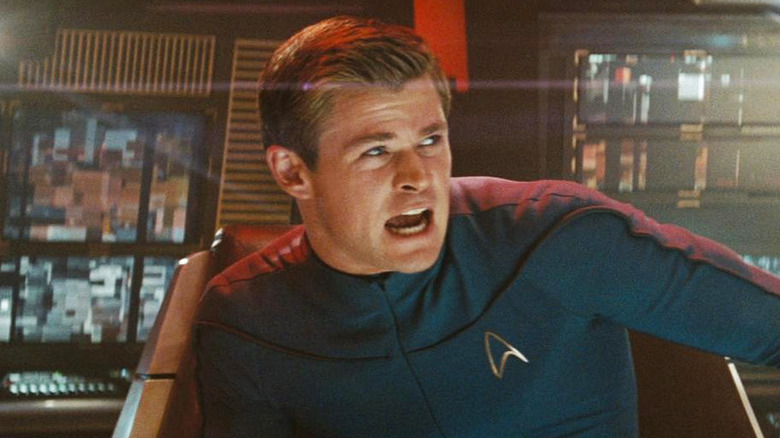
Plenty of actors have foreshadowed their impending stardom through small roles. Alfred Molina infamously rubbed his fingers together before betraying Indiana Jones in "Raiders of The Lost Ark." Kevin Bacon screamed "Thank you, sir, may I have another?" during a legendary scene from "Animal House." Chris Hemsworth, in under five minutes, takes command of a Starfleet ship and hears his son born right before he passes. It's an incredible set of circumstances and Hemsworth is up to them.
In many ways, Hemsworth's work is emblematic of what makes J.J. Abrams' "Star Trek" so wonderful: its humanity. His first effort is anything but a gritty reboot or a glorified attempt to make an "old" franchise "cool." Instead, "Star Trek" hones in on what makes the original characters so endearing by highlighting grace notes which never got their due. Chekov's exuberance is expertly realized by the late Anton Yelchin. Chris Pine gets to the heart of the cocky but wounded and well-meaning daring that makes James T. Kirk the Captain he is. Eric Bana's Nero, crucially, is a villain with purpose, one whose arc provides the social commentary that's always been an artery of the Star Trek franchise's heart. "Star Trek" would've found new life with or without J.J. Abrams, but "with" yielded one of the century's more effortless popcorn blockbusters.
Cabin In The Woods (2011)
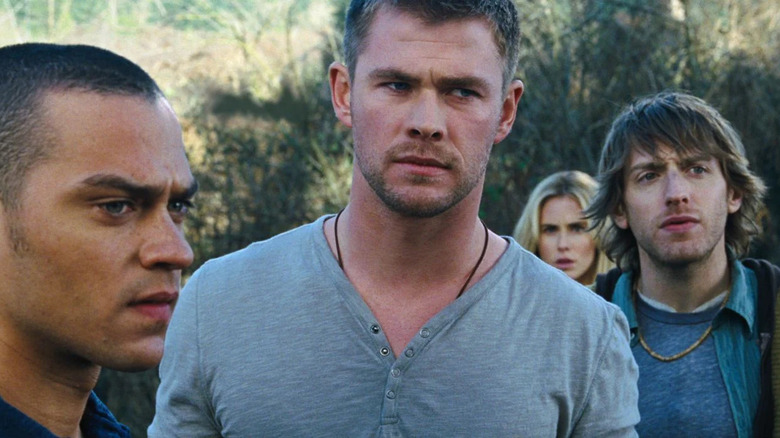
The "twist" movie was reborn in the wake of "The Sixth Sense." Bruce Willis being dead the whole time gave us "They called me Mr. Glass," the first reveal of Jigsaw, and the prestige of "The Prestige." For out money, though, the single greatest twist is the conceit that transforms Drew Goddard's "Cabin in the Woods" from a very good, pretty familiar horror film to a bonafide classic. "Woods" is a horror movie for people who love the reasons horror movies tick. It's a gateway picture for audiences that don't get it. If you were to beam it into space, there is a chance alien cultures would better understand humanity and then head Earth-ward to rent "The Shining," "Hellraiser," and so many more.
If it seems like I'm talking around the plot details of "Cabin in the Woods, " it's because they're best experienced blind with no context. Know that it's about five college students spending a weekend at someone's cabin when things go full horror movie. Then the twist occurs, and then the most surprising twist of all: the convention which transforms Goddard's movie reinforces the humanity of its core characters even as it becomes a love letter to the genre that doubles as an excellent examination of free will. Book a trip to this cabin as soon as possible.
The Avengers (2012)
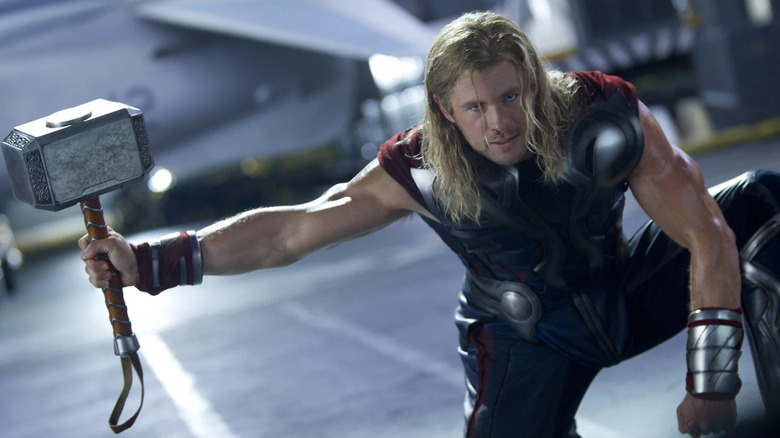
The longer Marvel's monolithic cinematic experiment progresses, the more miraculous its best movies seem. For better and worse, Kevin Feige's brand is established now. Even a film like "Doctor Strange in The Multiverse of Madness," which is unmistakably the work of Sam Raimi, feels like Raimi Trojan Horsing an "Evil Dead" sequel smack dab into Phase Four. The MCU is trying to top and reinvent itself with every new entry to remain on top of Hollywood.
Not "The Avengers," though. "The Avengers" is hungry. Joss Whedon's movie wants to take classic conventions from comics, TV, and blockbuster cinema to make their sum a brand new number. No one was ready for what "The Avengers" added up to. Multiple studios and IP conglomerates have tried to replicate its arithmetic (RIP Dark Universe), but no one has. Its collisions of character and tone still feel fresh, a decade after the fact. It's an all-timer. "The Avengers" is also, not surprisingly, the film which truly makes Chris Hemsworth Thor. It sharpens the character's sense of humor, while the familial drama — less of the main attraction than it was in Braghnah's "Thor" — plays better in brief but meaningful snippets. If Hemsworth's first appearance made you believe the Norse God existed, "The Avengers" convinces you he's a superhero. It's truly miraculous.
Read this next: Every Sam Raimi Film Ranked
The post The 15 Best Chris Hemsworth Movies, Ranked appeared first on /Film.
